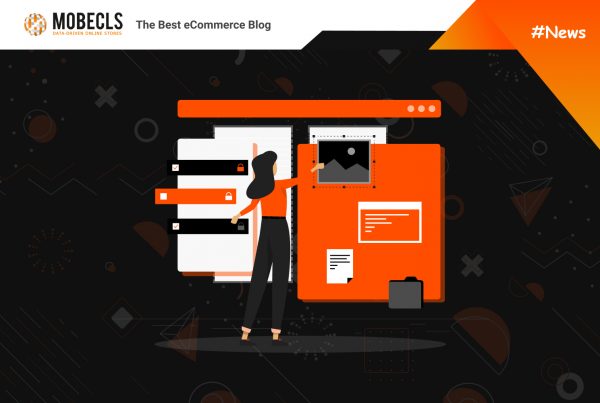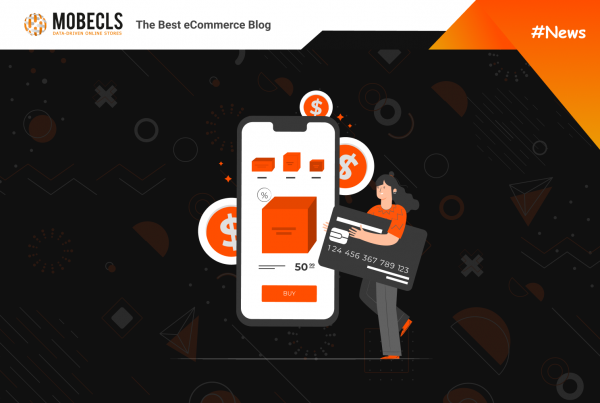eCommerce becomes more and more mobile each year. According to Statista.com, mobile sales have a 72 % share of total eCommerce. Online customers use variety of gadgets to visit websites and they want to have a seamless shopping experience. As every business has various demands and objectives, choosing the proper website design will result in improved performance and favorable outcomes. In this article we’ll deal with the differences between adaptive and responsive design options.
Responsive vs Adaptive Design: Key Considerations
Responsive and adaptive designs are the two major methods for building websites that ensures mobile responsiveness and flawless mobile user experience.
Responsive Design: Pros & Cons
Responsive design is an approach to web design that aims to make web pages render well on a variety of devices and window or screen sizes from minimum to maximum display size to ensure usability and satisfaction. It has a certain property values, such as a flexible layout grid, that allow one layout to work on different devices.
Responsive Design Pros
- User experience friendly: It is used to design websites that fluidly adapt to various screen sizes, particularly for mobile viewing. As a result, it broadens the audience for users and consumers using mobile and other tiny devices.
- SEO friendly: In general, responsive websites are to blame for high SEO rankings (Search Engine Optimization). In comparison to a desktop or laptop, a responsive website loads substantially quicker on mobile or tiny devices. This naturally enhances a favorable user experience, which raises the website’s SEO rating.
- Increase profit and sale: Easy to produce and quick to execute responsive site design. This is due to the lack of a need for a separate website for mobile devices. All screen sizes are accommodated with a responsive website. As a result, developing a different website for tiny devices can save time, effort, maintenance expenses, and development expenditures. Through tiny devices, it often improves the user experience and reaches more people. More sales and revenue will result from a larger audience.
- Low maintenance: All screen sizes may be accommodated with responsive websites. The text and other components are not altered to fit on a different device. All devices that access this website utilize the same material. The expense of maintaining two websites is also reduced because there is just one website that can be seen on all screen sizes. This is because keeping a separate site for a small device involves extensive testing and upkeep. One website management saves time, and money, and requires less upkeep.
- Easy to track users: Responsive websites load more quickly, save time and money, and eliminate the need to design a separate website specifically for mobile devices. This time and effort may be used to track website visits.
Responsive Design Cons
- Slow page loading: Although responsive websites are simple to manage, the page may occasionally take a while to load. It contains several high-resolution pictures and movies, which might take a while to load.
- Navigation is tough: Websites that are responsive are created specifically to fit on small screens. However, it may often be challenging to keep huge websites simple enough for tiny devices. This is due to the smaller screen sizes of tiny devices, which makes it harder to access websites on them.
- Time-consuming development: Although responsive websites are necessary, the creation process takes much longer than it does for regular websites.
Adaptive Design: Pros & Cons
Adaptive design promotes the creation of multiple versions of a web page to better fit the user’s device, as opposed to a single static page which loads (and looks) the same on all devices or a single page which reorders and resizes content responsively based on the device/screen size/browser of the user. Simply put, it’s designing a site with conditions that change depending on the device, based on several fixed-width layouts.
Adaptive Design Pros
- Targeted for each user: To enhance the user experience on each device, several website versions are developed for various devices utilizing adaptable web design. The design and content of this website can be changed to better fit screens and improve user experience.
- Increased load time: With adaptive web design, features that are most appropriate for a certain website are presented, and numerous layouts are made for different devices. Every time a user accesses a website using it, the layout that best matches their device’s screen is loaded. Loading times lengthen when traffic volume decreases. Even so, the server determines the device’s size before providing a layout that will best suit the screen of the device. It can only provide high-quality graphics when a high-density screen is identified.
- Advertising monetization: Advertising on websites will only increase revenue and provide new earning options. Adaptive websites are made to fit best on the device they are viewed on, they are the greatest method to maximize advertising choices. Smaller versions of websites are accessible, there is no need to alter or replace the ratio of banners, photos, etc. for smaller resolutions to appear optimally on screen.
Adaptive Design Cons
- Labor intensive to create: Adaptive web designs are not easy to create. It requires great thinking skills and more labor to create. Adaptive web design requires more time and effort as different website layouts are created to best fit on screen. Different website layout means different HTML code, and more will be coded, then more will be labor required to develop it.
- Complex and more difficult to manage: Adaptive websites are difficult to maintain since it is difficult to keep all website versions at the same level. Every version of a website must be updated and maintained separately as needed.
- Costly: Adaptive web design demands a lot of money to manage complexity and is labor expensive, requiring a larger team of engineers or laborers to construct it. Adaptive design is costly because it is difficult and complex. Building and maintaining it costs additional money.
How to choose between responsive and adaptive web design?
Both responsive and adaptive designs have been created to make your site mobile-friendly. But creating a responsive design requires less effort compared to developing an adaptive design.
So how do you choose between these two types of design? The following factors will help you with this:
- If your website is developed with a CMS (content management system) like Magento or Shopify, you can buy a theme with a built-in responsive web design;
- If your site is a self-made solution with many features, then you will need the help of eCommerce developers to create an adaptive design for screens of different sizes;
- If you want to improve the position of your site in search engines, then you can do it with the help of responsive design. Thus, the content of your site will be displayed correctly on mobile devices and tablets, so you will have more visitors;
- If your site hosts a lot of content and various design elements, then you are better off opting for a responsive design. Hire a team of eCommerce developers who will develop the correct site layout suitable for various devices.
Responsive web design is the best solution as it will display correctly on screens of any size. At the same time, your site will load faster, and the creation of such a design will cost significantly less.
But in some cases, it is better to choose the adaptive design. This design includes different versions of your site that will fit the screens of different devices.
Another important factor is the intent of your website visitors who use mobile devices. If their intent is different from the intent of desktop users, then you might be better off opting for a responsive design.
Need Help To Create an Outstanding Design for Your eCommerce Website?




